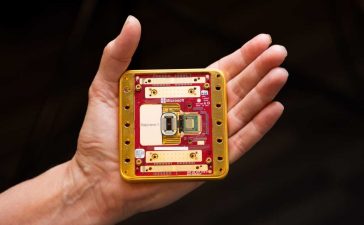
Volcanoes erupted on the mysterious far side of the moon billions of years ago, new research confirms.
Scientists analysed lunar soil brought back to Earth from China’s Chang’e-6 spacecraft, the first to return with a haul of rocks and dirt from the little-explored far side.
Two separate teams found fragments of volcanic rock that were about 2.8 billion years old. One piece was even more ancient, dating back to 4.2 billion years.
‘To obtain a sample from this area is really important because it’s an area that otherwise we have no data for,’ said Christopher Hamilton, a planetary volcano expert at the University of Arizona.
Scientists know there were active volcanoes on the near side, the part of the moon seen from Earth, dating back to a similar time frame.
Previous studies, including data from NASA’s Lunar Reconnaissance Orbiter, suggested the far side might also have a volcanic past.

The first samples from that region facing away from Earth confirm an active history. The results were published Friday in the journals Nature and Science.
China has launched several spacecraft to the moon.
In 2020, the Chang’e-5 spacecraft returned moon rocks from the near side, the first since those collected by NASA’s Apollo astronauts and Soviet Union spacecraft in the 1970s.
The Chang’e-4 spacecraft became the first to visit the moon’s far side in 2019.

The moon’s far side is pockmarked by craters and has fewer of the near side’s flat, dark plains carved by lava flows.
Why the two halves are so different remains a mystery, said study co-author Qiu-Li Li from the Chinese Academy of Sciences.
Li said the new findings reveal over one billion years of volcanic eruptions on the lunar far side.
Future research will determine how the activity lasted so long.
Get in touch with our news team by emailing us at webnews@metro.co.uk.
For more stories like this, check our news page.
MORE: College stabbing sparks rare and heavily censored online debate in China
MORE: How to watch the Leonids meteor shower tonight and when it will peak across UK
MORE: The last supermoon of 2024 has gone – but there will soon be another one











